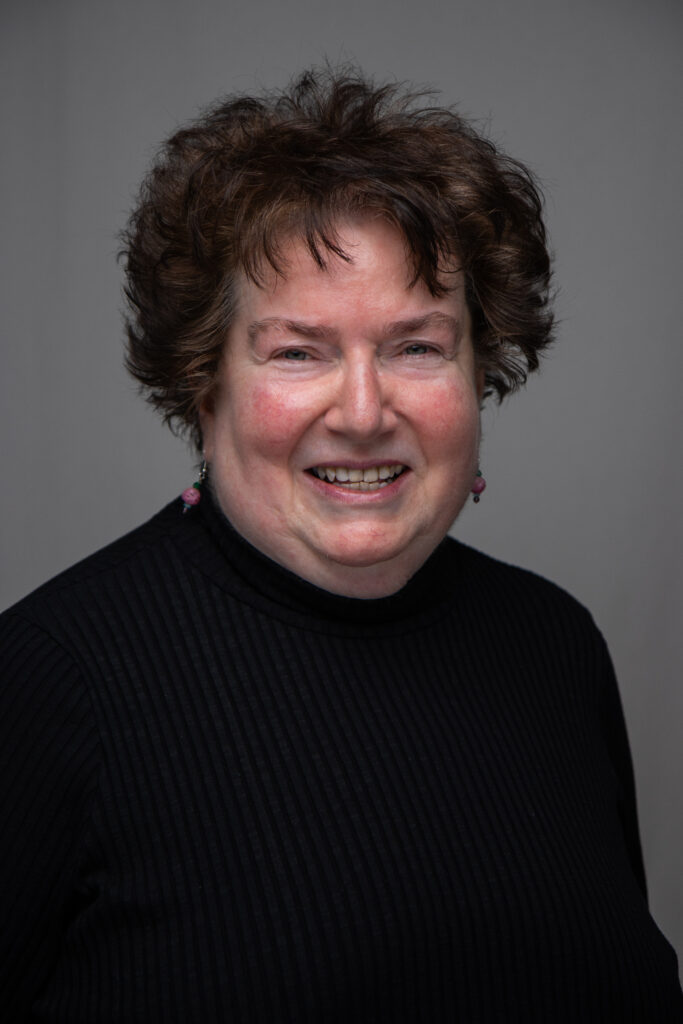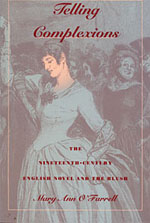Mary Ann O’Farrell

- Areas of Speciality
-
- 18th and 19th Century British Literature and Culture
- Cultural Studies
- Gender Studies
- Theory
- Popular Culture
- The Novel
- Contact
-
- (979) 845-8313
- maof@tamu.edu
- LAAH 522
- Professional Links
Education
Ph.D., University of California at Berkeley, 1991
B.A., New York University, 1980
Research Interests
Dr. O’Farrell’s Scholars@TAMU Profile
- Nineteenth-century literature and culture
- The novel
- History and discourses of the body
- Literary and cultural theory
- Contemporary popular culture
Her work was recently featured in an article in The Atlantic http://www.theatlantic.com/health/archive/2016/06/why-do-people-blush/489572/.
Honors and Awards
- Texas A&M Distinguished Achievement Award for Teaching, university level
- Honors Teacher-Scholar Award
- Teaching Excellence award
- In 2012, Dr. O’Farrell held a visiting fellowship from Chawton House Library and the University of Southampton (UK).
- Telling Complexions was named a Choice Outstanding Academic Book.
Publications
 O’Farrell, Mary Ann. Telling Complexions: The Nineteenth-Century English Novel and the
O’Farrell, Mary Ann. Telling Complexions: The Nineteenth-Century English Novel and the
Blush. 1997
In Telling Complexions Mary Ann O’Farrell explores the frequent use of “the blush” in Victorian novels as a sign of characters’ inner emotions and desires. Through lively and textured readings of works by such writers as Jane Austen, Elizabeth Gaskell, Charles Dickens, and Henry James, O’Farrell illuminates literature’s relation to the body and the body’s place in culture. In the process, she plots a trajectory for the nineteenth-century novel’s shift from the practices of manners to the mode of self-consciousness.
 O’Farrell, Mary Ann. Virtual Gender: Fantasies of Subjectivity and Embodiment. 1999
O’Farrell, Mary Ann. Virtual Gender: Fantasies of Subjectivity and Embodiment. 1999
This collection creates a name for gender fantasy—virtual gender—that introduces a new understanding of the concept, as it expands the idea of virtuality to include people and evens in history. The essays in Virtual Gender help identify and name the persistent cultural desire for an imaginative space in which to “put on” alternative gender identities, while examining as well the equally persistent and consequent critique of that desire.
Articles and Book Chapters
- “Introduction,” The Duties of a Lady’s Maid: With Directions for Conduct and Numerous Receipts for the Toilette (orig. pub. 1825). Chawton House Press, 2015.
- “Henry James’s Jolie Laide,” Henry James Review (special issue on Jamesian Styles), Vol. 35., No. 3 (Fall 2014):226-31.
- “Meditating Much Upon Forks: Manners and Manner in Jane Austen’s Novels,” Persuasions, No. 34 (2012 [2013]): 99-110.
- “Blindness Envy: Victorians in the Parlors of the Blind,” PMLA, Vol. 127, No. 3 (May 2012):512-25.
- “‘Bin Laden a Huge Jane Austen Fan’: Jane Austen in Contemporary Political Discourse,” in Uses of Austen: Jane’s Afterlives, ed. Gillian Dow and Clare Hanson. Basingstoke, UK, and New York: Palgrave Macmillan, 2012.
- “Dickens’s Scar: Rosa Dartle and David Copperfield,” in Dickens, Sexuality and Gender, ed Lillian Nayder. Ashgate, 2012. Reprinted from Telling Complexions.
- “Bump: Concussive Knowledge in James and Hitchcock,” in The Men Who Knew Too Much: Henry James and Alfred Hitchcock, eds. Susan Griffin and Alan Nadel. Oxford University Press, 2012.
- “Manners,” in Henry James in Context, ed. David McWhirter. Cambridge: Cambridge University Press, 2010.
- “The Laughter of the Diviners, or Manners and the Sacred,” Henry James Review, Vol. 31, No. 1 (Winter 2010):27-31.
- “Austenian Subcultures,” in A Companion to Jane Austen, Claudia Johnson and Clara Tuite, eds. Oxford: Wiley-Blackwell, 2009.
- “Sister Acts,” Women’s Studies Quarterly, Vol. 34, No. 3-4 (Fall/Winter 2006): 154-73. Special issue on envy, ed. Jane Gallop.
- “Missing Jane Austen: Henry James Considers the Old Maid,” Henry James Review, Vol. 27, No. 1 (Winter 2006):1-9.
- “Jane Austen,” in The Oxford Encyclopedia of British Literature, David Kastan, Nancy Armstrong, et al., eds. Signed entry. Oxford and New York: Oxford University Press, 2006.
- “Words to Do with Things: Reading about Willa Cather and Material Culture,” in Willa Cather and Material Culture: Real World Writing, Writing the Real World, ed. Janis Stout. Tuscaloosa: The University of Alabama Press, 2005.
- “Provoking George Eliot,” in Compassion: The Culture and Politics of an Emotion (Essays from the English Institute), ed. Lauren Berlant. New York: Routledge: 2004.
- “Whose Body?: Recognizing Feminist Mystery and Detective Fiction,” special double issue of The South Central Review, intro. and ed. (with Pamela Matthews), Vol. 18, Nos. 3-4 (Fall-Winter 2001).
- “Self-consciousness and the Psoriatic Personality: Considering Updike and Potter,” Literature and Medicine 20.2 (Fall 2001):133-50.
- “Jane Austen’s Friendship,” in Janeites: Austen’s Disciples and Devotees, ed. Deidre Lynch. Princeton: Princeton University Press, 2000.
- “Blindness and Domestic Terror in Wait Until Dark,” WHR (Western Humanities Review) Winter 1999:218-22.
- “Austen’s Blush,” Novel 27 (1994):125-39.
